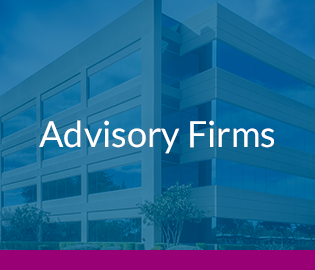 The growth of your firm relies on your strategic plan, your organizational structure and your human capital practices. Build your business strategy first, to get a clear understanding of what you want to deliver to clients. But then clarify your organizational structure to make sure you have the right people doing the right things.
The growth of your firm relies on your strategic plan, your organizational structure and your human capital practices. Build your business strategy first, to get a clear understanding of what you want to deliver to clients. But then clarify your organizational structure to make sure you have the right people doing the right things.
A client-centric business like an advisory firm requires you to define your service offering. To make informed decisions about whom to hire, and in which roles, you need to ask yourself several questions: Who are your target clients? What are their advice and service needs? What does the desired client experience look like?
What skills will your team need? How should your team work together to deliver the desired experience? Are there any working styles that will better suit your target market and foster the desired culture and experience you want in your firm?
Another question to ask: What levels of revenue and profit do you expect in your first year (and your third and fifth)? Once you determine your own financial plan, you can plan how many new clients you need to introduce to the business every year — and calculate the revenue required from existing relationships to sustain your cost structure.
DIFFERENT MODELS
With those questions answered, take a hard look at your firm’s organization. There are three basic types of advisory firm business models that can affect the way you deliver service to clients.
The solo model is essentially an individual practice. It revolves around one professional plus some support staff. These practices benefit from the owner’s high touch; the reputation of the firm is tied to the principal.
Solo firms offer advisors control, flexibility and the potential to earn a high income, making the model a preferred choice for many advisors throughout the life cycle of their practice and career.
Additionally, since most advisors I have met did not get into the advisory business to manage people, the simple organizational structure (with minimal management responsibilities) is very appealing.
Yet this model is limiting as well: All of the burden is on the solo advisor to find new clients, build the business and provide high-quality service to retain existing clients. In most cases, that limitation reduces the future valuation of the firm.
The silo model, on the other hand, is essentially a combination of solo practices. Silo firms have multiple advisors who maintain their own books of clients — so clients belong to the individual advisor, not the firm — but share such overhead expenses as office space, technology and support staff. Compensation stems largely from an advisor’s own client base. There is little or no sharing of profits and there is limited opportunity for joint initiatives or strategy.
This model has a lot of downsides: Such practices are hard to scale, operate inefficiently and provide no real opportunity for a career track for staff members — nor a succession plan for the advisors.
ENSEMBLE ADVANTAGE
The team-based culture of the ensemble service model is where I see future growth for the industry. These firms are multi-advisor businesses that deliver products and services as a team, using pooled resources and profits.
Clients are shared and are viewed as belonging to the firm. That in turn drives compensation, which is typically in alignment with the firm’s overall strategy and goals and initiatives.
Principals can spend more time with clients by pushing down work that can be completed by junior team members. That also frees up time for new business development — something I hear every firm say it needs more time for.
The ensemble model tends to improve the firm’s flexibility. Various team members can be brought together — based on both capacity and skill sets — to address a particular client’s needs. The firm can tap individual staffers’ technical strengths to deliver better support and service.
Along the way, clients become accustomed to dealing with a number of team members. Clients get access and support in a timely manner, and because they are not wedded to discussing all matters with a single principal, simple requests can be fielded by junior staff members — again increasing the principals’ capacity to focus on revenue generation.
There’s another advantage to ensemble models from a human capital perspective. Often the most valuable employees are also those looking for opportunities to expand their skills and advance their careers.
For these employees, the team model provides a career path. If implemented successfully, the model can help advisors attract and retain key talent — and, potentially, create internal succession options.
ORGANIZATIONAL SHIFTS
At my consulting practice, I often hear from firms that want to move toward an ensemble structure.
One of our past clients came to my consulting firm for help when she realized that her organizational structure lacked scalability. As the founder and sole owner of an RIA with $2.8 million in revenue, she was wearing too many hats: CEO, rainmaker, lead advisor, manager. She found this overload of roles was holding her back; she had virtually stopped bringing on new clients and new revenue.
At the time, she had two senior advisors reporting to her who had responsibility for servicing her existing book of clients, but they were not generating new revenue. We recommended that she move to an ensemble structure by hiring a junior-level advisor, creating a team approach to serve the clients. This provided leverage for the two senior advisors, freeing some of their time to develop new business.
In addition, she hired a dedicated chief operating officer to help her manage the firm on a day-to-day basis and support strategic growth initiatives. Our client plans to begin shifting to a part-time role in the next five to seven years, so her new COO is also a potential future owner and internal successor.
WHEN TO HIRE
One of the most difficult organizational questions for advisors is when to make the next hire — before a firm maxes out its capacity, or afterward? A secondary challenge: Should principals hire an experienced advisor with a book of clients, or invest in a junior person who can be trained to learn the firm’s way of doing things?
Remember, staff additions are most effective when they contribute to greater leverage at the advisor level, freeing a professional’s time to work directly with clients and prospects.
Depending on where a firm is in its evolutionary stage and chosen practice model, leverage will look different for different firms, but this overall concept holds true across the industry.
GUIDING PRINCIPLES
When designing your organizational structure for growth, be sure to abide by the following principles.
- Increase role clarity with your team. With greater role clarity and focus, team members know their roles well and become more competent and productive in the way they approach their work.
- Define the functions and create both job descriptions and clear goals, so that all members of the team know what is expected of them.
- Increase the specialization and the depth of skill that is needed to serve your clients. Ensure that every advisory position can focus on both the delivery of advice and revenue-generating activities in order to drive growth.
- Build operational capabilities, adding dedicated managers if necessary, to free advisors from the day-to-day work of running the firm.
- Keep your team focused on delivering advice and service. Even support staff should be focused on relationships with external clients, and should understand how their roles support your firm’s preferred client experience.
Kelli Cruz, a Financial Planning columnist, is the founder of Cruz Consulting Group in San Francisco.
From Financial Planning






